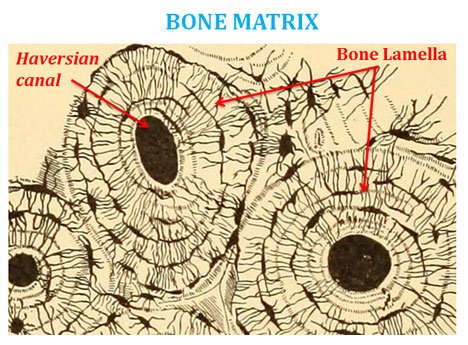Bone vs Cartilage
Difference between Bone and Cartilage: Bone and cartilage are connective tissues which form the skeletal system in the body. Bones are hard and tough which gives the structural framework of the skeleton in the body. Cartilages are soft and flexible components present in ear, nose and joints. Cartilage acts as shock absorbers between two bones and they prevent the rubbing between them the bones. Even though the bones and cartilages are connective tissues and they are the components of the skeletal framework, both show considerable differences in their formation, organization and functions.
The present post discusses about the Similarities and Differences between Bone and Cartilage with a Comparison Table.
Similarities between Bone and Cartilage
Ø Both bone and cartilage are connective tissues.
Ø Both are the components of the skeletal system.
Ø Both provide shape to body parts.
Ø Both provide protection to vital organs.
Ø Both are mesodermal in origin.
Ø Both composed of specialized cells embedded in the matrix of fibrous proteins.

| You may also like NOTES in... | ||
|---|---|---|
| BOTANY | BIOCHEMISTRY | MOL. BIOLOGY |
| ZOOLOGY | MICROBIOLOGY | BIOSTATISTICS |
| ECOLOGY | IMMUNOLOGY | BIOTECHNOLOGY |
| GENETICS | EMBRYOLOGY | PHYSIOLOGY |
| EVOLUTION | BIOPHYSICS | BIOINFORMATICS |
Difference between Bone and Cartilage
Sl. No. Bone Cartilage
1 Bone is tough and hard Cartilage is soft and flexible
2 Bones cannot bend Cartilages can bend
3 Function: protection against mechanical damage, movement of body parts, provides shape; produce blood cells, storehouse of minerals Functions: Reduce friction at joints, support the respiratory tract, acts as shock absorbers, and provides shape and flexibility of fleshy appendages such as ear and nose
4 Bone matrix composed of ossein * Cartilage matrix composed of chondrin *
5 Ossein is tough and inflexible Chondrin is firm but flexible
6 Bone matrix is organic and inorganic Cartilage matrix is completely organic
7 Bone matrix made up of proteins, calcium and phosphorous Cartilage matrix made of proteins and sugars
8 Bone matrix is always impregnated with calcium salts Cartilage matrix is free or impregnated with calcium salts
9 Matrix is lamellate and occurs in concentric manner Matrix occurs as homogenous mass
10 Osteocytes * are irregular Chondroblasts * are oval shaped
11 Osteoblasts * present: Osteoblasts are the layer of bone forming cells. They present as outer and inner layers No special cartilage forming cells. Cartilage grows by the division of all chondroblasts
12 Only one cell per bone lacunae Each cartilage lacunae with a single or group of two or four cells
13 Osteocytes give off branching processes in the developing bone Processes are absent in chondroblasts
14 Lacunae give off canaliculi * Lacunae do not have canaliculi
15 Bone is vascular Cartilage is non-vascular
16 Bone is porous Cartilage is non-porous
17 Nerve supply present Nerve supply absent
18 Bone usually has bone marrow at the center No such tissue present in cartilage
19 Two types of bones: Compact bone and spongy bone Three types of cartilages: hyaline-cartilage, fibro-cartilage and elastic-cartilage
20 Bones possess Haversian system * and Volkman’s canals * Cartilage does not have Haversian system and Volkman’s canals
21 The growth pattern of bone is bidirectional. Growth pattern of Cartilage is unidirectional
22 The covering of bone is called periosteum The covering of cartilage is called perichondrium
23 Bones never change to cartilage Cartilage sometimes becomes bony due to calcification
24 Metabolic activity of bone is high Metabolic activity of cartilage is low
25 Oxygen demand high in bones Oxygen demand low in cartilage
26 Bones possess extensive repair capabilities Cartilages have very limited range of repair capabilities
* Glossary…
Ossein: The main protein component of bone also known as the collagen of bones.
Chondrin: A complex protein-carbohydrate mixture, the major component of cartilage.
Osteocytes: A type of bone cell, formed when an osteoblast becomes embedded in the material it has secreted.
Osteoblasts: main bone producing cell in the bone.
Chondroblasts: major cell component of cartilage, produces the chondrin which forms the matrix of cartilage.
Bone canaliculi: minute canals between the lacunae of ossified bones.
Haversian system: A structural unit of bone consisting of a Haversian canal and corresponding lamellae of compact bone.
Volkman’s canal: Channels in the bone that transmit blood vessels from the periosteum into the bone and that communicate with the haversian canals.
<< Back to Human Physiology Notes Page

I find it very easy to understand 👍
I found it easy too thanks
This is nice